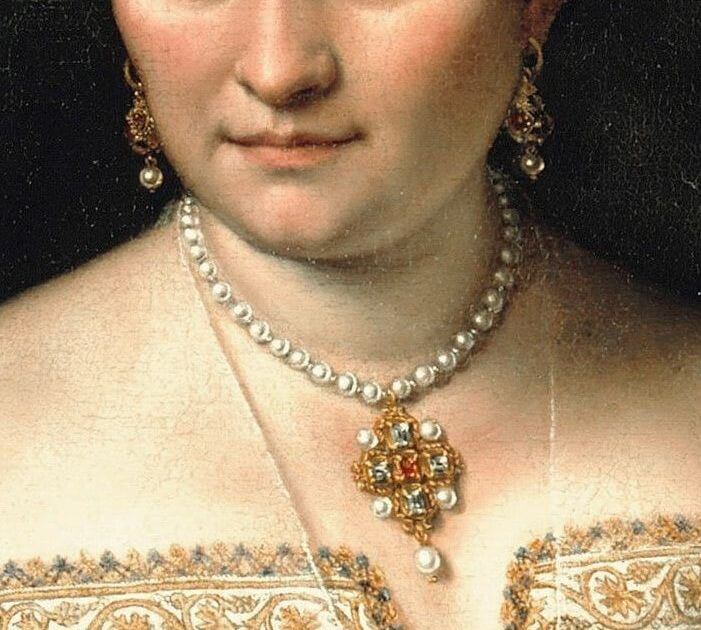
Unraveling the Mystique: Gems as Talismans and Protectors through Medieval and Renaissance Eras
Share
Unraveling the Mystique: Gems as Talismans and Protectors through Medieval and Renaissance Eras
by Susie Sandoval
This article explores the profound significance of gemstone talismans in the Medieval and Renaissance eras, uncovering their symbolism, varied applications, and lasting influence on contemporary culture.

Hans Memling - Portrait of Maria Portinari - Metropolitan Museum of Art
By Hans Memling - The Yorck Project (2002) 10.000 Meisterwerke der Malerei (DVD-ROM), distributed by DIRECTMEDIA Publishing GmbH. ISBN: 3936122202., Public Domain, https://commons.wikimedia.org/w/index.php?curid=155496
Gems as Talismans in Medieval Beliefs
In the Medieval era, gemstones were believed to possess metaphysical qualities that could ward off evil and bring good fortune. These beliefs stemmed from ancient traditions and were deeply intertwined with the religious and superstitious beliefs of the time. Gemstones were considered divine gifts from the heavens, imbued with celestial powers.

La Sultana Rossa, Titian 1550.
By Workshop of Titian - http://emuseum.ringling.org/emuseum/objects/24004/portrait-of-a-woman?ctx=58f0b43d-c6c8-4c05-843a-f456a9ca7f7d&idx=3, Public Domain, https://commons.wikimedia.org/w/index.php?curid=7929744
Each gemstone was thought to possess unique properties and attributed meanings. For instance, the deep blue sapphire was believed to safeguard its wearer from envy and harm, while the fiery red ruby symbolized vitality and protection against illness. With their remarkable brilliance, Diamonds were revered for their ability to repel evil and enhance spiritual enlightenment.
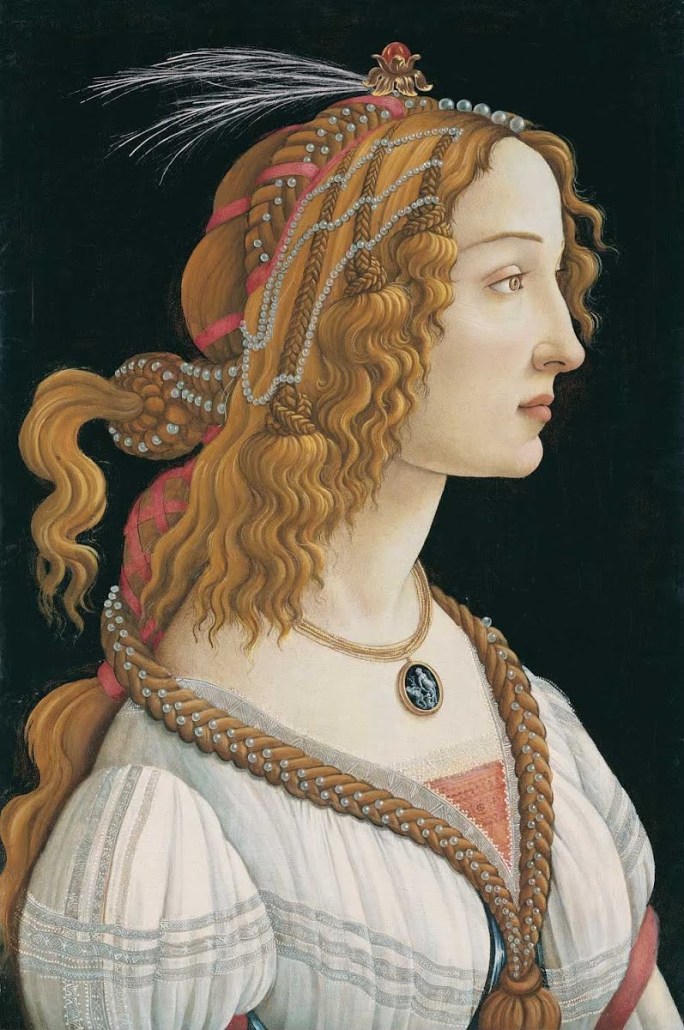
Portrait of a Young Woman (Botticelli, c. 1480). Image by: Wikipedia
By Sandro Botticelli - GwFKQCuQs0yvFA — Google Arts & Culture, Public Domain, https://commons.wikimedia.org/w/index.php?curid=29097021
Gemstone Symbolism and Usage in Renaissance Jewelry
During the Renaissance, the use of gemstones in jewelry became highly symbolic, reflecting the era’s cultural and intellectual shift towards humanism. Jewelry designers and artisans skillfully incorporated gems into intricate designs, conveying messages and narratives through the medium of precious stones.
Gemstones were carefully chosen for their symbolic meanings. For instance, emeralds symbolized rebirth and fertility, while amethysts represented piety and wisdom. Pearls, considered the “Queen of Gems,” symbolized purity and chastity. Jewelry adorned with such gemstones became expressions of social status, personal beliefs, and the wearer’s identity.
 Lorenzo Costa - Portrait of a Woman with a Pearl Necklace, 1450.
Lorenzo Costa - Portrait of a Woman with a Pearl Necklace, 1450.
By Lorenzo Costa - Web Gallery of Art: Image Info about artwork, Public Domain, https://commons.wikimedia.org/w/index.php?curid=15416525
Royal and Noble Patronage of Gemstone Talismans
Gemstones held immense significance in the royal courts and noble households of the Medieval and Renaissance eras. Royalty and nobility amassed vast collections of gemstones and commissioned intricate talismanic jewelry. These pieces were believed to bestow protection and showcase their owners' wealth and power.
Here are some examples of prominent figures and their significant gemstone talismans:

Portrait of a Lady by Hans Holbein, 1535.
By Hans Holbein the Younger - Toledo Museum of Art: 1926.57, Public Domain, https://commons.wikimedia.org/w/index.php?curid=15441949
Queen Elizabeth I of England
Queen Elizabeth’s adoration for gemstone talismans is well-documented. One notable piece was her renowned locket ring, which featured a portrait of her mother, Anne Boleyn. This cherished ring held deep personal sentiments for Queen Elizabeth and served as a protective charm, accompanying her throughout her reign.
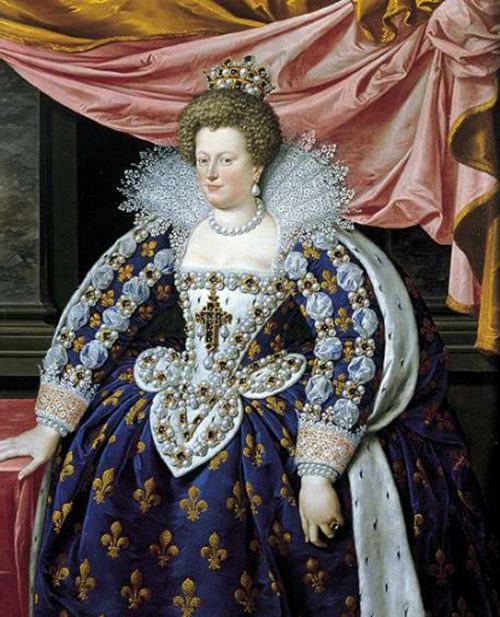
Portrait of Marie de Médicis by Frans Pourbus the Younger, 1613.
By Frans Pourbus the Younger - Web Gallery of Art: Image Info about artwork, Public Domain, https://commons.wikimedia.org/w/index.php?curid=15417188
Catherine de Medici, the Queen of France
Catherine de Medici, known for her influential role in the French court, possessed a famed talismanic pendant. This pendant was adorned with an enigmatic “Table of Solomon,” a mystical symbol believed to grant power and protection to the wearer. Catherine treasured this talisman, recognizing its potential to safeguard her and bring her good fortune.
These historical examples illustrate influential figures’ profound attachment and belief toward gemstone talismans. They showcase the personal significance these talismans held, not only as fashionable accessories but also as symbols of protection, power, and personal connection.
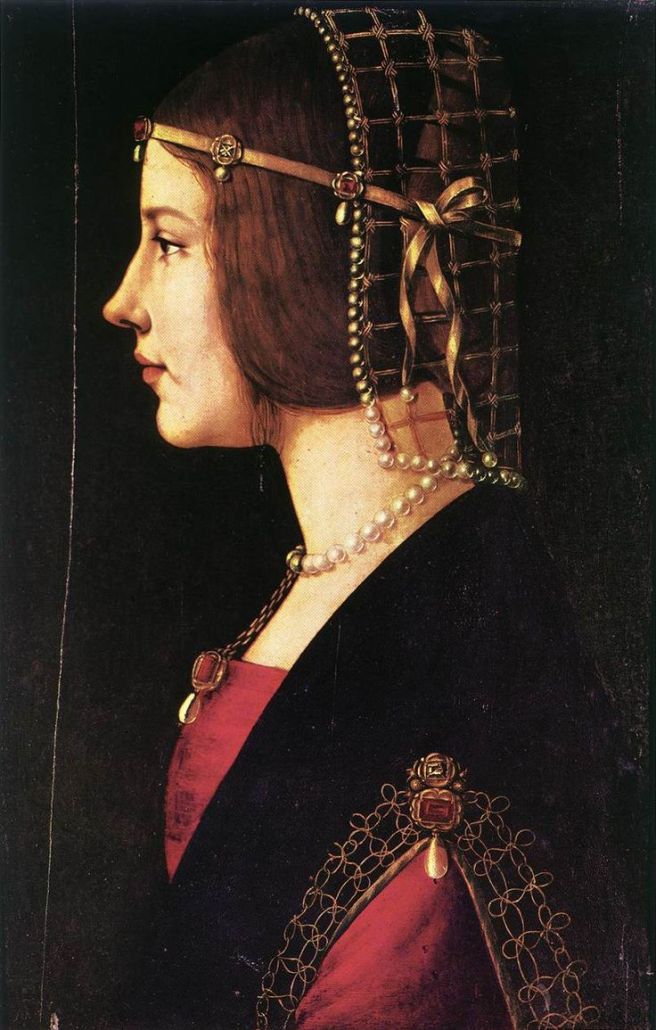
Portrait of a Woman by Giovanni Ambrogio de Predis. c. 1480s.
By Giovanni Ambrogio de Predis - The Yorck Project (2002) 10.000 Meisterwerke der Malerei (DVD-ROM), distributed by DIRECTMEDIA Publishing GmbH. ISBN: 3936122202., Public Domain, https://commons.wikimedia.org/w/index.php?curid=2273324
Gems as Protective Amulets and Superstitions
Beyond royal circles, gemstone talismans were cherished by individuals from all walks of life. Common folk embraced gemstones as protective amulets, wearing them in various forms to ward off evil spirits, witchcraft, and ill fortune. Gemstones were incorporated into rings, pendants, and bracelets, with each piece holding deep personal significance.
Superstitions and beliefs surrounding gemstone talismans were prevalent during these eras. For instance, wearing an amethyst was believed to protect against drunkenness, while an opal was considered a bad omen unless worn by those born in October. These superstitions added an air of mystery and caution to using gemstone talismans.

Selvaggia Sassetti by Davide Ghirlandaio. c 1480.
By Davide Ghirlandaio - Metropolitan Museum of Art, online collection (The Met object ID 110000933), Public Domain, https://commons.wikimedia.org/w/index.php?curid=23868448
Legacy and Influence of Medieval and Renaissance Gemstone Talismans
The legacy of gemstone talismans from the Medieval and Renaissance eras resonates in contemporary culture. Their influence can be seen in jewelry design, symbolism, and even popular culture. Modern jewelry often incorporates gemstones with specific meanings, allowing wearers to express their beliefs or invoke the protective qualities associated with these stones.
The enduring allure and significance of gemstone talismans lie in their ability to transcend time and connect us with our ancestors’ beliefs and traditions. Understanding the cultural and historical context of gemstone talismans enriches our appreciation for their beauty and symbolism.
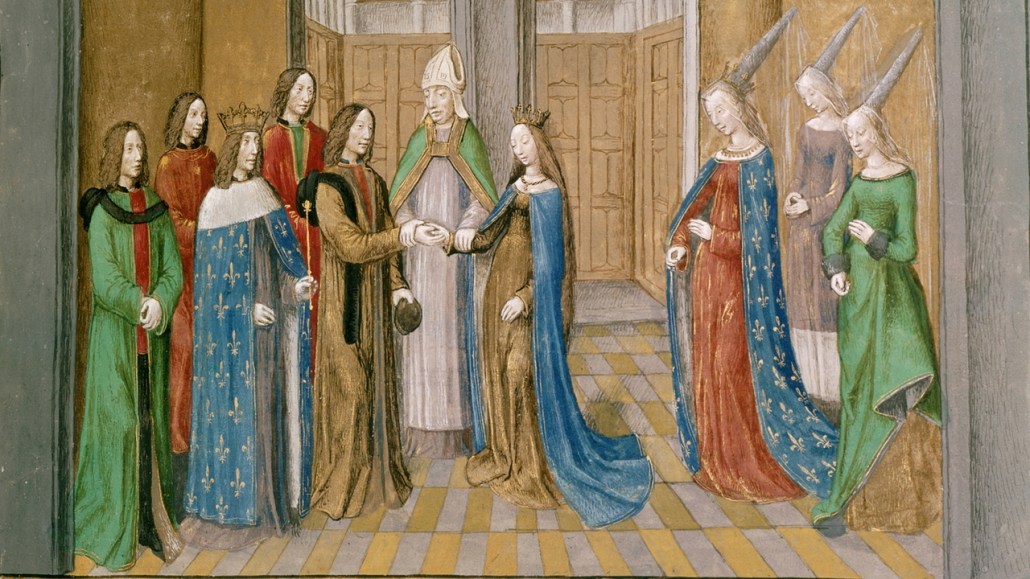 Marriage of Bohemond I, Prince of Antioch, and Constance, daughter of King Philip I of France, circa 1106. Image: Wikimedia.
Marriage of Bohemond I, Prince of Antioch, and Constance, daughter of King Philip I of France, circa 1106. Image: Wikimedia.
Gemstone talismans held profound significance during the Medieval and Renaissance eras, serving as protectors and bearers of hidden meanings. The belief in their mystical properties was deeply ingrained in society, from the royal courts to the common folk. Their enduring legacy is evident in their continued presence in contemporary culture, where they continue to captivate and inspire. Exploring the cultural and historical value of gemstone talismans offers a glimpse into the rich tapestry of human beliefs and the enduring fascination with these precious gifts from the earth.
